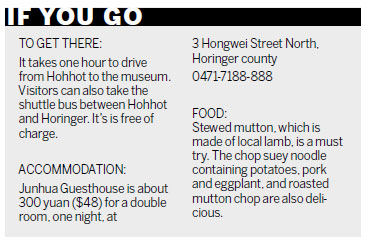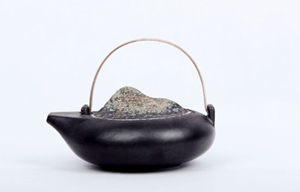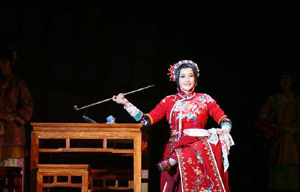
The exhibits range in time from the Han Dynasty (206 BC-AD 220) to the Tang Dynasty (AD 618-907) and include bronze mirrors, pottery figurines and drinking vessels.
A parrot-shaped kettle is the most valuable item and is the museum's symbol, but a pair of cartoon-like soldier pottery figurines attracts me most.
The exhibits clearly show the transition of the Xianbei people from a nomadic group to an agricultural civilization.
Tuoba Hong, an emperor from the Northern Wei period, initiated significant political and economic reforms in the late 5th century. He even changed major Xianbei surnames into Han ones and renamed himself Yuan Hong.
Fifty kilometers from the museum, the tomb of a high official from the Han Dynasty was discovered and though the coffin chamber had been raided and was empty, many frescoes were still extant.
A replica of the tomb has been reproduced in the museum, which includes vivid scenes of nomadic life.
After absorbing cultural influences from elsewhere, the Xianbei people turned to Buddhism and religious art peaked. Some of these first-class works are exhibited in the museum.
When the dynasty moved its capital to Pingcheng, today's Datong in Shanxi province, and later Luoyang, Henan province, the Xianbei created the world renowned Yungang Grottoes and Longmen Grottoes, which are UNESCO World Heritage Sites.
This flourishing culture fell apart in the 6th century and gradually merged with other groups. Today, the Xianbei's descendants are thought to be the Xibe ethnic group.
Horinger, which means "20 homes" in Mongolian, is a hub for many other ancient nomadic ethnic groups, and though it is difficult to trace the histories of these groups a sign on the museum wall seems apt: "Disappearance never means extinction. Instead, it is the beginning of mixing and harmonizing."
Contact the writer at wangkaihao@chinadaily.com.cn.




